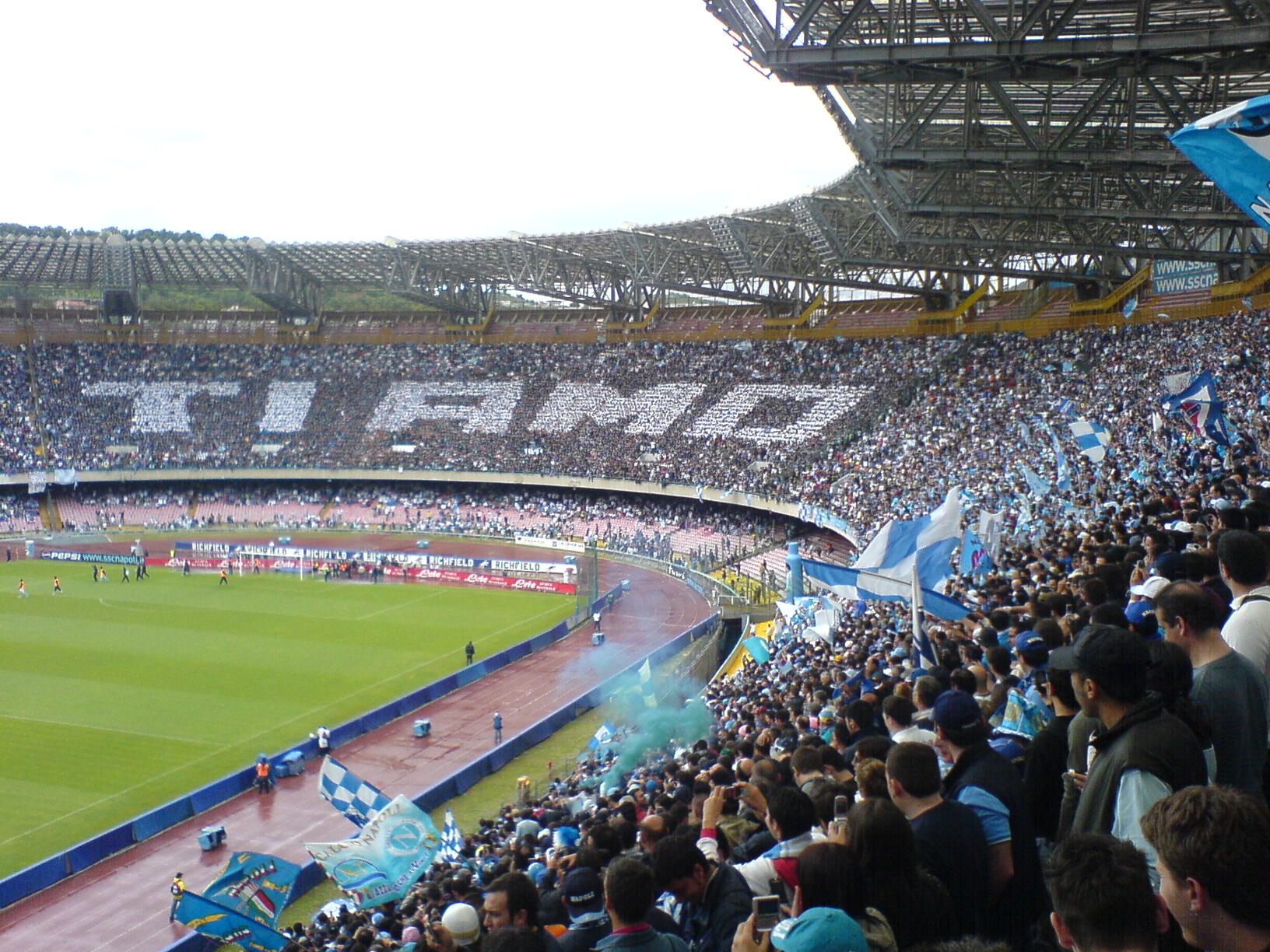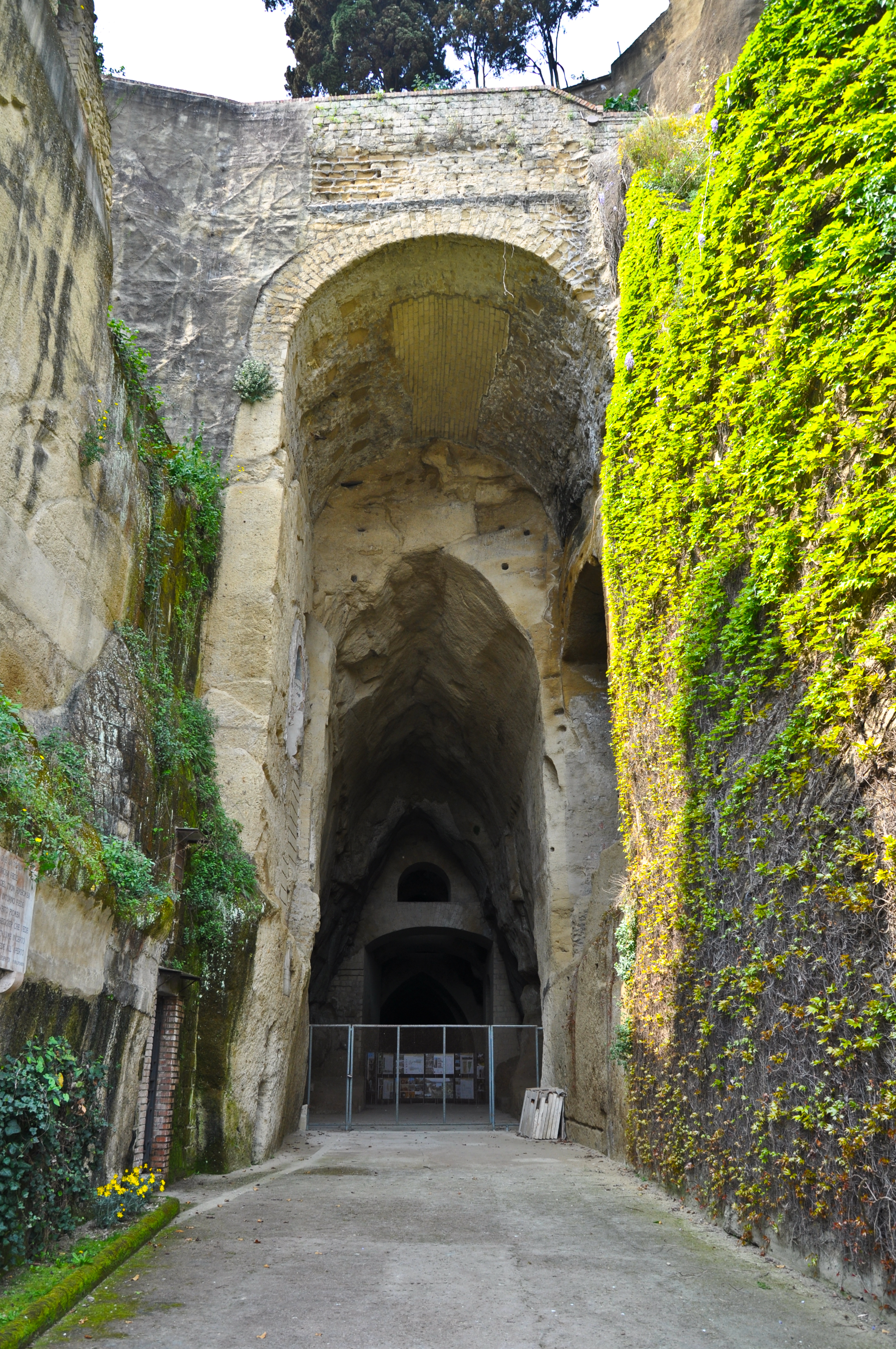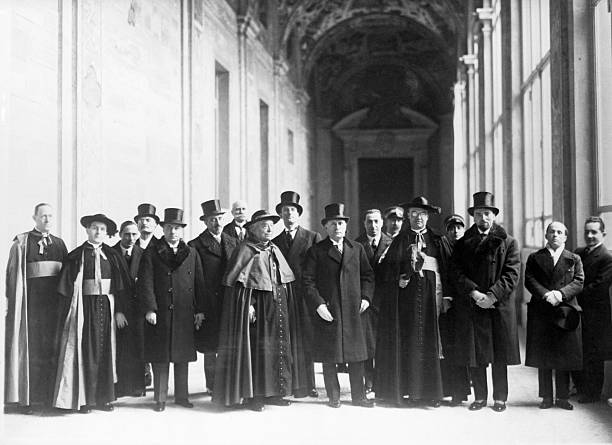|
Fuorigrotta
Fuorigrotta (; ) is a western suburb of Naples, southern Italy. Covering an area of 6,2 km2, it is the most populated suburb of the city (population: 76.521). Geography It lies beyond the Posillipo hill and has been joined to the main body of Naples by two traffic tunnels through that hill since the early 20th century. It is the site of the Stadio Diego Armando Maradona, home to the Serie A team S.S.C. Napoli and the PalaBarbuto, home of the Lega Basket Serie A team Napoli Basket. It is also the site of the new Monte Sant'Angelo campus of the University of Naples. Etymology and history The suburb owes its name, meaning "outside the grotto", to its position: since Roman times, one or more tunnels have connected it with the district of Mergellina. The oldest tunnel is a Roman one, the Crypta Neapolitana, connecting Fuorigrotta with Piedigrotta. In Roman times, it connected Naples to the road that led to Pozzuoli and to area of the Phlegrean Fields. Fuorigrotta ha ... [...More Info...] [...Related Items...] OR: [Wikipedia] [Google] [Baidu] |
Stadio Diego Armando Maradona
Stadio Diego Armando Maradona, formerly known as Stadio San Paolo, is an all-seater football stadium in Naples, Italy. Completed in 1959, it is the fourth largest football stadium in Italy after Milan's San Siro, Rome's Stadio Olimpico and Bari's San Nicola. The stadium currently seats 54,726, but prior to converting to an all-seater venue it could hold about 90,000 people — most of them standing. It is the home of SSC Napoli, the reigning Serie A champions. Following the death of Diego Maradona in 2020, city mayor Luigi de Magistris and Napoli president Aurelio De Laurentiis proposed renaming the stadium to "Stadio Diego Armando Maradona." The proposal was passed on 4 December 2020, and was announced by the mayor on social media and made official that same day. History Napoli was in need of a replacement stadium after the Stadio Partenopeo had been destroyed during the bombing of Naples in the Second World War. The team had been playing at a smaller nearby venue ... [...More Info...] [...Related Items...] OR: [Wikipedia] [Google] [Baidu] |
Mostra D'Oltremare
The Mostra d'Oltremare in Naples is one of the main trade fair venues in Italy and, together with the Fiera del Levante in Bari, the largest in Southern Italy. The venue covers an area of and includes buildings of considerable historical and architectural interest, as well as more modern exhibition pavilions, fountains (including the monumental Fountain of the Esedra), a tropical aquarium, gardens with a great variety of tree species and an archaeological park. Location and connections The exhibition is located in the Quarters of Naples, neapolitan district of Fuorigrotta: the area is connected to the rest of the city through the integrated transport system, thanks to the Cumana, line 6 (Mostra) and line 2 of the underground, the latter housed in the inside the Campi Flegrei railway station. History The exhibition, born as the Triennale d'Oltremare, was conceived as a "Universal Thematic Exhibition", together with the park of the Universal Exhibition of Rome (later EUR, Ro ... [...More Info...] [...Related Items...] OR: [Wikipedia] [Google] [Baidu] |
Crypta Neapolitana
The Crypta Neapolitana (Latin for "Neapolitan crypt") is an ancient Roman road tunnel near Naples, Italy. It was built in 37 BC and is over 700 metres long. The tunnel connected Naples with the so-called Phlegrean Fields and the town of Pozzuoli along the road known as the '' via Domiziana''. Geography The eastern entrance (on the Naples side) lies in the Vergiliano park of Piedigrotta ("at the foot of the grotta"); the western end is in the area now called Fuorigrotta ("outside the grotta"). The site is also noteworthy for the presence of the so-called Virgil's tomb, as well as the tomb of the Italian poet Giacomo Leopardi. History Naples and Pozzuoli were separated by a great impenetrable marsh: the first road between the two cities was probably built by the Greeks and was narrow and indirect. The first Roman road connecting Neapolis and the Phlegrean fields, the ''via (Antiniana) per colles'', was built at the beginning of the 1st century BC and followed the easiest ... [...More Info...] [...Related Items...] OR: [Wikipedia] [Google] [Baidu] |
Naples
Naples ( ; ; ) is the Regions of Italy, regional capital of Campania and the third-largest city of Italy, after Rome and Milan, with a population of 908,082 within the city's administrative limits as of 2025, while its Metropolitan City of Naples, province-level municipality is the third most populous Metropolitan cities of Italy, metropolitan city in Italy with a population of 2,958,410 residents, and the List of urban areas in the European Union, eighth most populous in the European Union. Naples metropolitan area, Its metropolitan area stretches beyond the boundaries of the city wall for approximately . Naples also plays a key role in international diplomacy, since it is home to NATO's Allied Joint Force Command Naples and the Parliamentary Assembly of the Mediterranean. Founded by Greeks in the 1st millennium BC, first millennium BC, Naples is one of the oldest continuously inhabited urban areas in the world. In the eighth century BC, a colony known as Parthenope () was e ... [...More Info...] [...Related Items...] OR: [Wikipedia] [Google] [Baidu] |
Phlegrean Fields
The Phlegraean Fields (, ; ) is a large volcanic caldera west of Naples, Italy. The Neapolitan Yellow Tuff eruption (about 12ka BP) produced just 50 cubic kilometers. It is, however, one of relatively few volcanoes large enough to form a caldera. It is part of the Campanian volcanic arc, which includes Mount Vesuvius, about east of Naples. The Phlegraean Fields is monitored by the Vesuvius Observatory. It was declared a regional park in 2003. The Phlegraean Fields' largest known eruptions have an estimated volcanic explosivity index (VEI) of 7. It is often called a supervolcano in popular media, although the accepted definition for that term is a volcano that has had an eruption with a VEI of 8, the highest level. The area of the caldera consists of 24 craters and volcanic edifices. Most of them lie under the Gulf of Naples. There are effusive gaseous manifestations in the Solfatara crater, which was believed in ancient Rome to be the home of Vulcan, the god of fire. The ... [...More Info...] [...Related Items...] OR: [Wikipedia] [Google] [Baidu] |
10th Municipality Of Naples
The Tenth Municipality (In Italian: ''Decima Municipalità'' or ''Municipalità 10'') is one of the ten boroughs in which the Italian city of Naples is divided. Geography The municipality, part of the area of Campi Flegrei, is located in the western suburb of the city and borders with Pozzuoli. Its territory includes the zones of Agnano, Nisida Nisida is a volcano, volcanic islet of the Flegrean Islands archipelago, in southern Italy. It lies at a very short distance from Cape Posillipo, just north of Naples; it is connected to the mainland by a camera-enforced 1km-long pedestrian zone. ..., Coroglio and Astroni. Administrative division The Tenth Municipality is divided into 2 quarters: References External links Municipalità 10 page on Naples website {{Subdivisions of Naples Municipality 10 ... [...More Info...] [...Related Items...] OR: [Wikipedia] [Google] [Baidu] |
University Of Naples
The University of Naples Federico II (; , ) is a public university, public research university in Naples, Campania, Italy. Established in 1224 and named after its founder, Frederick II, Holy Roman Emperor, Frederick II, it is the oldest public, secular, non-sectarian or state-funded university in the world, and one of the List of oldest universities in continuous operation, world's ten oldest universities in continuous operation. It was Europe's first university dedicated to training secular administrative staff, and is one of the world's oldest academic institutions in continuous operation. With over 90,000 students (2022) it is among the largest universities in Europe, long the only state university in Naples, until the establishment of the University of Campania Luigi Vanvitelli in 1991, formerly ''Seconda Università di Napoli.'' The motto of the University is ''Ad scientiarum haustum et seminarium doctrinarum'', taken from the circular letter of Frederick II. Over the course ... [...More Info...] [...Related Items...] OR: [Wikipedia] [Google] [Baidu] |
PalaBarbuto
PalaBarbuto, also known by its naming rights, sponsorship name of PalaEldo, is an indoor arena, indoor sporting arena located in Naples, Italy. The facility is located in ''Viale Giochi del Mediterraneo'', in close proximity to the Olympic swimming pool Piscina Felice Scandone. History The arena was built and inaugurated in 2003, with a capacity of 4,000 seats, to host Napoli Basket (2016), Basketball Napoli matches, due to the structural decay of the Mario Argento, located opposite on viale Giochi del Mediterraneo. Originally named after the sports reporter Lello Barbuto and now bearing the name of Eldo Megastore, a chain of Italian electronics mega stores, it is currently the home of the professional basketball teams Nuova AMG Sebastiani Basket Rieti, Nuova AMG Sebastiani Basket of the Lega Basket and S.S. Basket Napoli, Eldo Napoli. In September 2006, its seating capacity was increased to 5,500 in order to comply with Euroleague arena requirements, which at that time required a ... [...More Info...] [...Related Items...] OR: [Wikipedia] [Google] [Baidu] |
Fascist Italy (1922–1943)
Fascist Italy () is a term which is used in historiography to describe the Kingdom of Italy between 1922 and 1943, when Benito Mussolini and the National Fascist Party controlled the country, transforming it into a totalitarian dictatorship. The Italian Fascists imposed totalitarian rule and crushed political opposition, while simultaneously promoting Modernization theory, economic modernization, traditional social values and a rapprochement with the Roman Catholic Church. According to historian Stanley G. Payne, "[the] Fascist government passed through several relatively distinct phases". The first phase (1922–1925) was nominally a continuation of the parliamentary system, albeit with a "legally-organized executive dictatorship". In foreign policy, Mussolini ordered the pacification of Libya against rebels in the Italian colonies of Italian Tripolitania, Tripolitania and Italian Cyrenaica, Cyrenaica (eventually unified in Italian Libya), inflicted the Corfu incident, bombing ... [...More Info...] [...Related Items...] OR: [Wikipedia] [Google] [Baidu] |
Pozzuoli
Pozzuoli (; ; ) is a city and (municipality) of the Metropolitan City of Naples, in the Italian region of Campania. It is the main city of the Phlegrean Peninsula. History Antiquity Pozzuoli began as the Greek colony of ''Dicaearchia'' () founded in about 531 BC in Magna Graecia with the consent of nearby Cumae when refugees from Samos escaped from the tyranny of Polycrates. The Samnites occupied Dicaearchia in 421 BC after conquering Cumae and may have changed its name to Fistelia. It enjoyed considerable political and commercial autonomy favoured by the excellent position of its port with the Campanian hinterland. The Roman occupation of Campania after the end of the 1st Samnite War from 341 BC marked the start of the Romanisation of the Greek-Samnite city. During the Second Punic War (218–201 BC), Rome recognised the strategic importance of the port of Puteoli and reinforced the defences and introduced a garrison to protect the town from Hannibal, who failed to ... [...More Info...] [...Related Items...] OR: [Wikipedia] [Google] [Baidu] |
Piedigrotta
Piedigrotta (; ; "at the foot of the grotto") is a section of the Chiaia quarter of Naples, Italy Italy, officially the Italian Republic, is a country in Southern Europe, Southern and Western Europe, Western Europe. It consists of Italian Peninsula, a peninsula that extends into the Mediterranean Sea, with the Alps on its northern land b ..., so-called for the presence of the Church of the Madonna of Piedigrotta near the entrance to the Crypta Neapolitana. The area was also well known for an annual festival, which gave rise to a song writing competition leading to the commercial birth of the popular Neapolitan song. References Zones of Naples {{Campania-geo-stub ... [...More Info...] [...Related Items...] OR: [Wikipedia] [Google] [Baidu] |
Mergellina
Mergellina () is a coastal district of the city of Naples, Italy. It is located in the quartiere of Chiaia. It stands at the foot of the Posillipo Hill and faces the Castel dell'Ovo. Some people say the name derives from ''mergoglino'', a local name for the smew, others believe it is a corruption of ("Yellow Sea"), which would refers to when the sea turned yellow due to floating tufa rock dust following an eruption of the Vesuvius. However, very likely the real origin of the name is from Latin , which stands for "clear, transparent sea". Overview Historically, it was a small fishing village and port and was quite distinct from Naples itself. The expansion of Naples to the west under the Spaniards in the 17th century and subsequent development under the Bourbons and then by the national Italian government between 1880 and 1915 gradually led to the incorporation of Mergellina into greater metropolitan Naples. Today it is still a fishing port but also a secondary tourist harbor ... [...More Info...] [...Related Items...] OR: [Wikipedia] [Google] [Baidu] |






